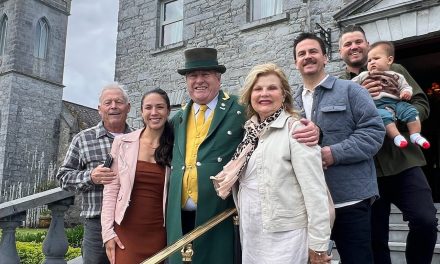By John Copeland
Contributing Writer
There is no world organization that designates the official day a new season begins. In fact, there are different ideas about how to define the seasons. There are actually two beginnings to every season. You have meteorological seasons, and you have astronomical seasons.
Meteorologists and climatologists will tell you that winter begins on Dec. 1. Astronomers will tell you that winter begins on the winter solstice on Dec. 21.
Meteorological seasons have been around since the early to mid-20th century. Meteorological seasons are based on the annual temperature cycle while the astronomical seasons are based on the position of Earth relative to the sun.
Astronomical seasons have been around for thousands of years and are based on the rotation of Earth around the sun. Earth’s tilt on its axis is what causes the astronomical seasons.
When it comes to calculating yearly, seasonal and monthly averages, the meteorological seasons make it easier. Instead of adjusting dates, like that of the astronomical seasons, the start and the length of meteorological seasons are more consistent.
However, I think, annual temperature cycles are pretty antiseptic — for most of Earth’s creatures, nothing is as fundamental as the length of daylight. The winter solstice on Tuesday, Dec. 21, will mark the shortest day and longest night of the year in the Northern Hemisphere and the longest day and shortest night in the Southern Hemisphere.
Winter inspires both joy and woe. December is the darkest time of the year and was once both the most dreaded and most hopeful of times. This year’s pandemic is likely to make it feel a lot darker this year. More than ever, it’s important to remember that the darkness is only temporary.
Many cultures the world over have solstice festivals. No one is really sure how long ago humans recognized the winter solstice and began celebrating it as a turning point. All were driven by the ancient fear that the failing light would not return unless humans intervened. In ancient times, our ancestors were determined to brighten the darkest month of the year.
Ancient Romans welcomed winter with the festival of Saturnalia, honoring Saturn, the god of agriculture. People decorated their houses with evergreen branches and lit lamps all night to ward off the darkness.
The ancient Celts hung golden apples and lit candles on oak trees to celebrate the winter solstice.
Hanukkah is the Jewish Festival of Lights celebrated in countries all over the world. In 165 BCE there was a great battle between the Maccabees and the Syrians. The Jews won the battle and when they went to the temple, they discovered the Syrians had allowed the sacred light to go out. There was only oil left for one day. The miracle of Hanukkah is that the oil lasted eight days until a courier could return with more. There are nine candles in the menorah. One of them is used to light the other candles and the other eight stand for the eight days that the oil kept burning.
In Chaco Canyon, New Mexico, the mysterious Anasazi were expert sky watchers. They carved spiral designs into rocks to track the seasons and record the passage of time. In Chaco Canyon is a petroglyph called the Sun Dagger, named for the way the sun’s wedge-shape beams strike it in midday during the winter solstice
In our times, Christmas has appropriated most of the ancient winter solstices practices and customs steeping it in superstition and folk belief. Christmas is the most culturally pervasive and successful festival of all time. Yet, for all the light and joy of Christmas, it requires the darkness as well.
Folklore from around the world is full of stories of witches, elves, trolls, vampires and even werewolves that roamed the hours of extended darkness at this time of year. In fact, in several European traditions, even ol’ St. Nicholas was accompanied by dark companions. One of these was Krampus, who carried a sack, not unlike Santa’s, but instead of giving out gifts, Krampus would stuff the bag full of bad children to be taken away and eaten!
After a year full of changes and uncertainty, our classic holiday celebrations are going to be a relief as we return to larger gatherings in bright surroundings. The Yule log, evergreens, colored glass ornaments, lights on our houses and Christmas trees — all of these traditions come down to us from our collective human past. Today, just as in earlier times, each is designed to make the season bright.
Christmas has a magic that is difficult to grasp and even more difficult to explain. It brings together traditions, ideas and customs from all over the world and from all times in human history. Unlike other holy days, which were often solemn religious observances, the winter solstice was a time for great celebration and joy; a party held in the face of Earth’s darkest hour.
If all human civilization could write its own memoir and tell the complete story of Christmas past, surprisingly, the tale would not begin in Bethlehem, but 2,000 years earlier in the cradle of civilization. It would be a story involving Christians and non-Christians alike. Babylonians, Greeks and Romans, whose ancient customs became part of the Christmas. The tale would tell of early Europeans hanging fir sprigs and winter greenery to renew life and protect against the cold blasts of Arctic wind. People who had not yet heard of the Christ child would be burning Yule logs. And the tale would continue for another 2,000 years, with each generation adding to the customs of Christmas. And in the end, it would include the story of each one of us who has ever hung an ornament on a tree or presented a gift to someone special.
May your celebrations of this season draw deep from the abundant joy, fierce hopes and enduring traditions of all our ancestors and fill your home with light, warmth and good cheer.




